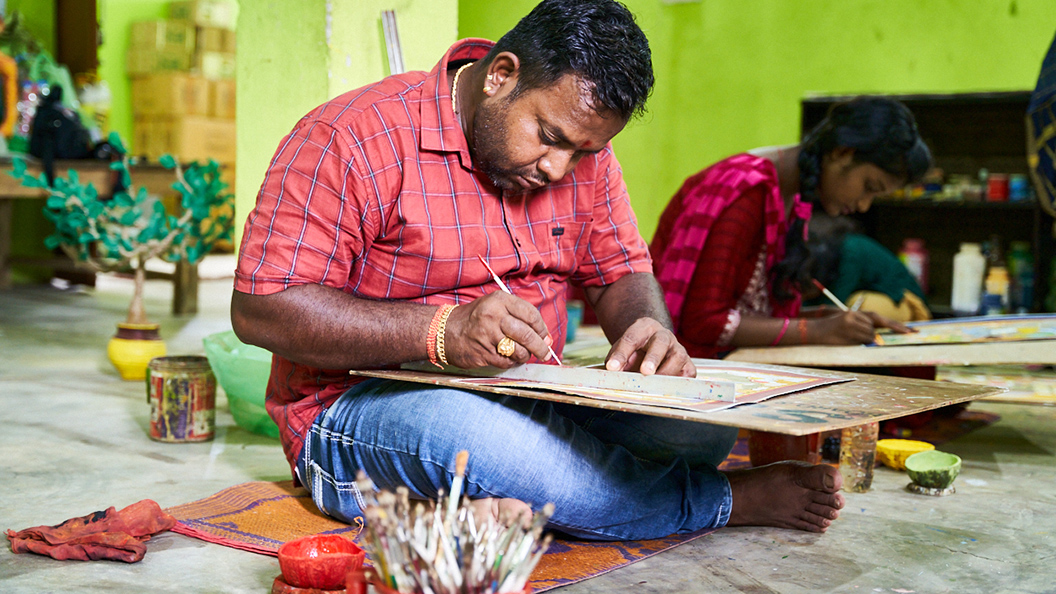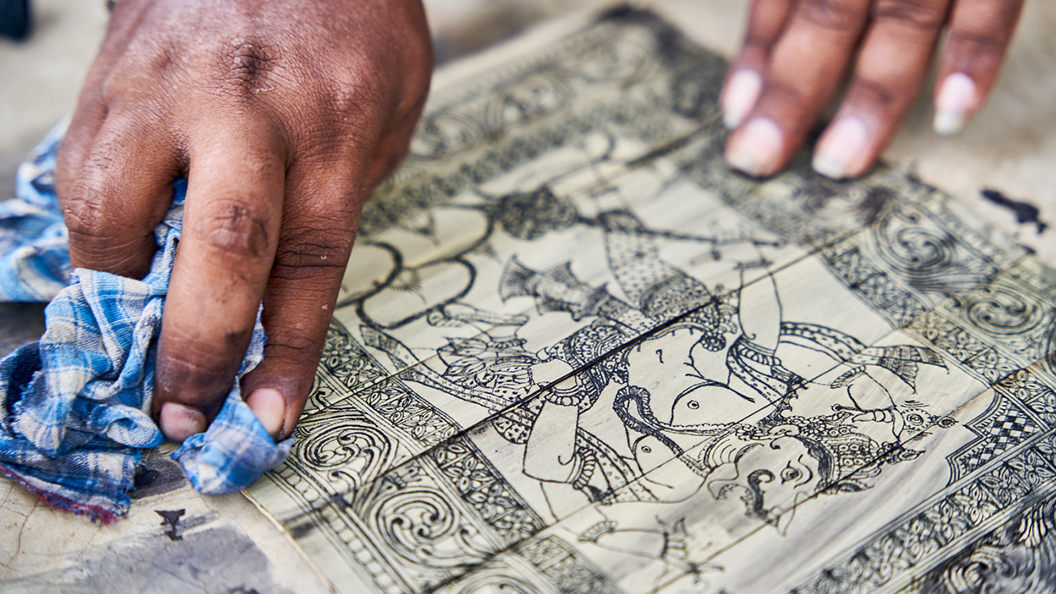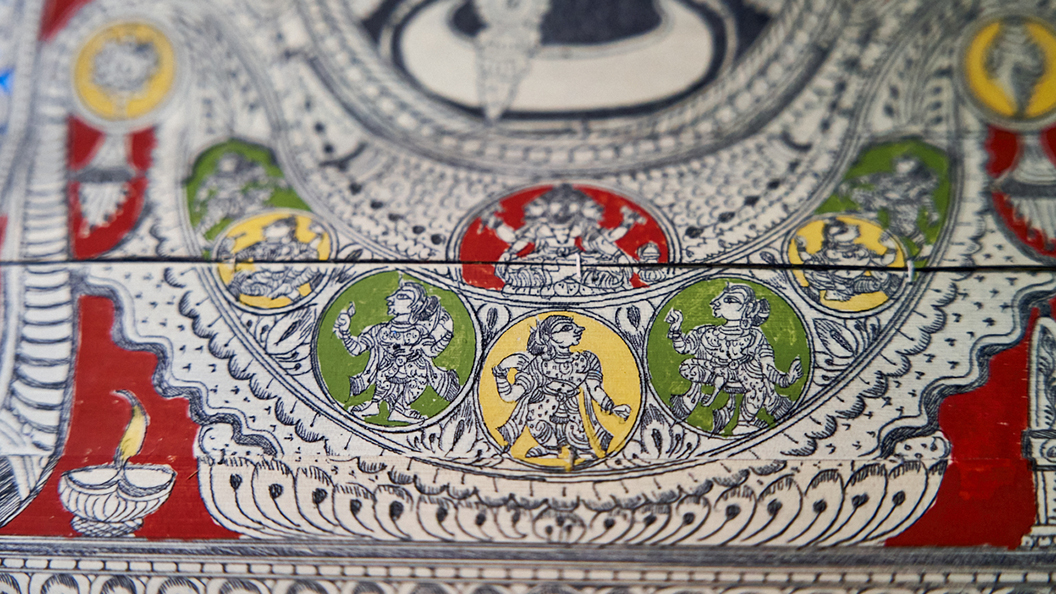THE CRAFT
Pattachitra

From the states Odisha and West Bengal

Puri, Odisha, and Kolkata, West Bengal
Pattachitra is a form of scroll painting from Bengal and Odisha. Artists of this tradition depict mythological stories, folktales and deities. Thr name comes from the practice of painting on long panels of fine cotton cloth — patta means cloth and chitra means painting.

Heritage Value
The practice of Pattachitra began with the Mahapatra chitrakars, an artisan community of Odisha inspired by the state’s Jagannath Temple. The artists use natural colours: white from conch-shell powder, yellow from the haritala stone, red from red oxide stone, black from burning lamps, blue from indigo and green from leaves.
The artist's scroll is first treated with a white powder made of chalk and glue from tamarind seeds. Once the painting is ready, the colours are sealed with lacquer for a glossy finish. Some Pattachitra paintings are also painted on palm leaves and handmade paper.
In Bengal, the Patua community are custodians of the art. They practice Chalchitra, a form of scroll painting. One can find these used as the background for the idol of Goddess Durga during Durga Puja. Pattachitra is also used as a narrative device during Patua Sangeet, a folk music tradition of the Patuas.
West Bengal and Odisha Pattachitras have their own distinct styles. Each earned a separate Geographical Indication (GI) tag. The former got its certification in 2018 and the latter in 2008.
The artist's scroll is first treated with a white powder made of chalk and glue from tamarind seeds. Once the painting is ready, the colours are sealed with lacquer for a glossy finish. Some Pattachitra paintings are also painted on palm leaves and handmade paper.
In Bengal, the Patua community are custodians of the art. They practice Chalchitra, a form of scroll painting. One can find these used as the background for the idol of Goddess Durga during Durga Puja. Pattachitra is also used as a narrative device during Patua Sangeet, a folk music tradition of the Patuas.
West Bengal and Odisha Pattachitras have their own distinct styles. Each earned a separate Geographical Indication (GI) tag. The former got its certification in 2018 and the latter in 2008.

Memory Vault
Kalighat Pattachitra was a key inspiration for legendary Bengali artist Jamini Roy. At a time when India was at the peak of its struggle for Independence, Roy consciously rejected Western artistic traditions.
Disclaimer:
Any information on this page is anecdotal and based on publicly
available details. If you're interested in learning more,
click here.